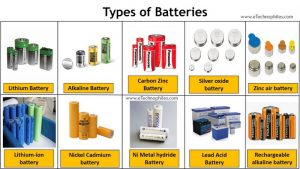Last updated on April 6th, 2024 at 10:26 am
Portable devices have become a vital part of our lives as they offer us the convenience of being able to take them with us wherever we go. Batteries power all these devices, making them completely portable. The type of battery used depends on the device and application. For example, a laptop would require a different type of battery(shape and size) than a smartphone.
How many types of electric batteries are there?
Batteries are broadly classified into primary batteries and secondary batteries. The primary batteries are for one-time use only as they cannot be recharged. Whereas, the secondary batteries are rechargeable. Both types are further classified into different batteries.
Both types are further classified into different batteries depending on the chemicals used in them. For example, a lead-acid battery used in vehicles is a secondary battery, and the zinc-carbon batteries used in flashlights are primary batteries. There are also lithium-ion batteries, which are a type of rechargeable or secondary battery.
Different battery types have different advantages and disadvantages. For example, lead-acid batteries are very durable but require regular maintenance, while lithium-ion batteries have a high energy density but are more expensive. Ultimately, the type of battery that is best for a particular application depends on several factors, including cost, weight, size, and required shelf life. Given below is the list of the types of batteries that are most commonly used.
- Primary Battery
- Lithium battery
- Alkaline battery
- Carbon-Zinc battery
- Silver Oxide battery
- Zinc air battery
- Secondary Battery
- Lithium-ion battery
- Nickel Cadmium battery
- Nickel Metal hydride battery
- Lead acid battery
- Rechargeable alkaline battery
This article discusses all these battery types in detail.
Table of Contents
What are primary batteries?
A primary battery is a type of battery that cannot be recharged and must be discarded once its power is depleted. The most common type of primary battery is the disposable dry cell, which is used in a wide variety of applications, from flashlights to watches.
These are convenient because they are ready to use out of the box, but their limited lifespan can be costly in the long run. It is non-rechargeable because the chemical reactions that happen in it are irreversible and the chemicals cannot return to their original form.
The key advantages of primary batteries are they are cheap, lightweight, easily available, have less maintenance, and come in several configurations. They are usually used in devices with low current drain.
The major disadvantage is that they cannot be reused. Also, these have comparatively less capacity.
Still, they are very commonly used around us. The best examples are remote controls and other lightweight portable devices.
What are the types of primary batteries?
There are many different types of primary batteries but the most common ones along with their features and applications are discussed below.
Read also: Important Battery Terms & Characteristics Explained (with Examples)
Lithium batteries
Lithium batteries offer the highest capacity among all primary batteries. The active anode material in these batteries is lithium, thus the name. It covers numerous other advantages such as lightweight, long shelf life, appropriate to use in extreme temperatures, high specific energy, etc. Also known as Lithium-metal battery.
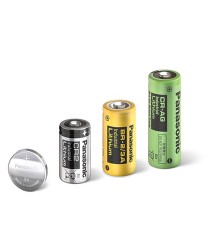
Due to safety concerns, these are mostly available in small sizes as button-sized cells. They are highly flammable and should be disposed of with extreme care. The larger sizes are only used in military applications.
Used in – Mainly in pacemakers. Clocks and Cameras.
Note: Do not confuse Lithium battery with Lithium ion battery, which is a type of secondary battery.
Alkaline batteries
Alkaline batteries are the most widely used primary battery type. The chemical composition of alkaline batteries is zinc alkaline manganese dioxide. These are the most commonly available primary battery for households. These are widely used in low-current drain portable devices like remote controls.
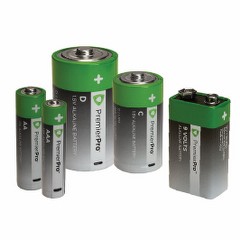
An alkaline battery possesses an excellent shelf life and high capacity. Another notable benefit is its availability in several different shapes, sizes, and capacities. However, leakage poses a limitation, and it is also unsuitable for high-current applications.
Used in – Electronic toys, radios, digital cameras, flashlights, and MP3 players.
Carbon zinc battery
A carbon Zinc battery was once a popular primary battery type that used zinc as an anode and a carbon rod as a cathode. The ammonium chloride solution is used in paste form as the electrolyte. It is thus called a “dry cell”. Carbon Zinc is also called “heavy-duty cells”. These are the cheapest primary battery.
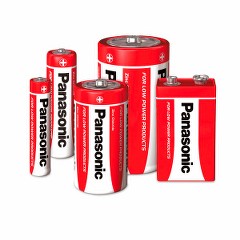
Since they offer less power, they are commonly used in household applications like remotes and clocks. Carbon Zinc batteries are available in almost all variety of sizes and are easily available. These are nowadays mostly replaced by alkaline batteries.
Less shelf life is a limitation. It is not suitable to function in extreme temperature conditions.
Used in -clocks, remote control for the television, flashlight, and smoke detector
Silver oxide battery
Silver Oxide battery uses silver oxide as a cathode and zinc as an anode. Since it uses silver, it is comparatively more expensive than any other primary battery. It is available in small sizes and is thus used in small devices like wristwatches.
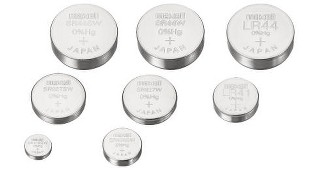
Silver oxide batteries offer a high energy density and exceptionally long operating life. A peculiar quality of these is they provide almost the same voltage throughout their life until it is fully discharged. A high energy-to-weight ratio is another peculiar feature of these cells. Read more
Used in – Quartz watches, and BLE devices and was used in the Apollo program lunar mission
Zinc-air batteries
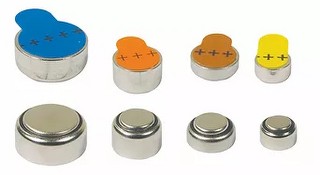
Zinc-air batteries contain only the anode material, which is zinc. It uses oxygen from the ambient air as the cathode. It offers a very high energy density and has a very long run time. This feature makes it the most suitable to power some medical devices like hearing aids and pacemakers.
These are also widely used in cameras. Zinc Air batteries are not suitable for use in extreme climatic conditions, temperature, and humidity.
Used in – hearing aids, pacemakers, film cameras, and electric vehicle propulsion
How do primary batteries differ from each other?
The table given below gives a detailed comparison of the primary batteries discussed above. This can help you choose the most appropriate one for your application.
| Battery Name | Available Sizes | Capacity | Shelf Life | Common Application | Pros | Cons |
|---|---|---|---|---|---|---|
| Lithium Batteries | AA, AAA, and 9V | 2,700-3,400 mAh | 10-12 years | Emergency devices, light-weight for portable devices | Long shelf life, better, and the highest capacity in primary batteries. | Expensive, careful disposal, not available in large sizes. |
| Alkaline Batteries | Available in all sizes | 2,500 mAh | 5-10 years | Household portable devices like remote controls and dolls | Economical, easy to dispose of, perfect for most devices, cheap | Heavy and bulky, not suitable for bulky devices, leakage |
| Carbon Zinc Batteries | Available in most the sizes | 600 mAh | 2-3 years | Remotes, clocks, and low-power households. | Cheap, easily available | Very low energy density, cannot perform in extreme temperatures, low shelf life |
| Silver Oxide Batteries | In small button sizes | 150 – 200 mAh | 3 years | Used in small devices like wristwatches | Exceptionally long operating life, high energy-to-weight ratio | Expensive |
| Zinc Air Batteries | Small sizes | 3600 mAh | 3 years | Cannot be used in extreme temperatures and humidity | Have a very long run time, inexpensive | Cannot use in extreme temperatures and humidity |
What are secondary batteries?
Secondary batteries can be reused once drained out. They are rechargeable batteries. The number of cycles of possible charging and discharging depends on the battery type. During recharging, the chemical reaction reverses and the active chemicals come back to their original state.
The devices that provide electric current to charge these batteries are called chargers or rechargers.
The most familiar application of secondary battery is in mobile phones and laptops which we frequently recharge and use. The battery in electric vehicles is another particular example of a secondary battery. Since they can be reused, secondary batteries are preferred over primary ones nowadays.
Note: In gas-powered vehicles, a Lead acid battery(secondary battery) is used to power the electronics of the vehicle(light, speaker) and also as a starter battery.
What are the types of secondary batteries?
There are many different types of Secondary batteries but the most common ones along with their features and applications are discussed below.
Lithium-ion
The invention of Lithium-ion batteries was a breakthrough in rechargeable batteries. It uses lithium as a cathode and graphite as the anode. It offers considerable enhancement of several peculiar features of a battery.
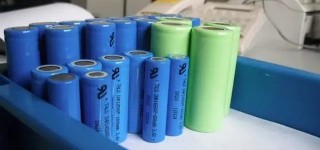
The lithium-ion battery has a good current capacity and long cycle life. It is lighter in weight and exhibits extremely good capacity. It is available in standard sizes as well as in customized sizes and is the most popular and widely used rechargeable battery nowadays.
The most significant limitation of these batteries is the tendency to overheat which can pose a safety hazard. Overheating of these batteries causes fire. It should be recycled or disposed of properly since it contains cobalt oxide or nickel oxide.
Used in: Cellphones, Laptops, Electric vehicles, Wireless headphones, and handheld power tools.
Nickel-cadmium
Nickel Cadmium batteries use nickel oxide hydroxide as the cathode and cadmium as an anode. These batteries are highly reliable and show high power capability. This battery is operable in a wide temperature range and has a long cycle life.
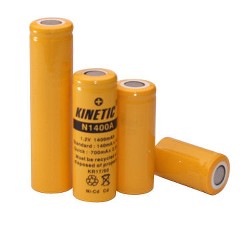
It offers very high capacity and thus can be used for high-current applications. These batteries maintain a constant voltage until they discharge completely. It gives too low run-time per charge and makes approximately a 30% discharge rate per month.
Beyond these, the most significant drawback of Ni-Cd cells is the highly toxic nature of cadmium used in it. Due to this issue, Ni-Cd batteries are banned in several countries.
Used in: Power tools, emergency lighting, hobby RCs, photography equipment, and flashlights.
Nickel Metal Hydride
Nickel Metal Hydride(Ni-MH) battery was introduced as an improvisation of Ni-Cd batteries. It provides the same voltage as the Ni-Cd battery type but offers 30% more capability.
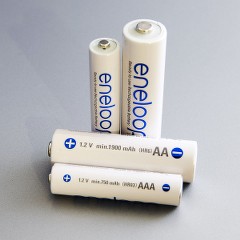
These batteries are free from cadmium and thus reduce the toxic content. However, it has to be properly recycled after use since it uses nickel oxide and cobalt. Ni-MH battery type exhibits good current capability and long cycle life. The discharge rate of these batteries is approximately 40% per month.
Used in: Old mobile phones and digital cameras.
Lead acid
Lead Acid batteries are another popular rechargeable battery. The lead oxide is used as the cathode and lead as the anode. Highly concentrated aqueous sulfuric acid is used as the electrolyte in these cells. These batteries are mostly used in heavy applications like wheelchairs, scooters, etc, and are not thus available for common consumer purposes.
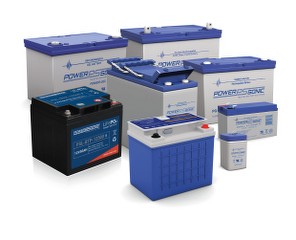
They are comparatively inexpensive and non-spillable. They are manufactured in a very reliable and economical way. Since it uses toxic lead, the battery has to be recycled well. Almost 90% and above Lead-acid batteries are efficiently recycled and reused today.
The major drawback of these batteries is the chance of catching fire. This may happen due to short-circuit, puncture, damage, improper charging, or improper disposal. Read more
Used in: Electric vehicles as main power supply, Gas vehicles as a starter battery, UPS and Inverter battery, etc.
Rechargeable alkaline
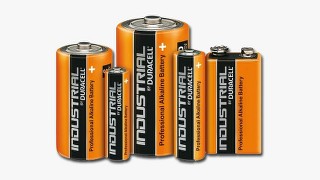
Rechargeable alkaline batteries are the most cost-effective option for rechargeables. They offer the advantages of alkaline batteries with the ability to recharge, meeting high consumer demand. They’re suitable for moderate power applications and boast a long shelf life compared to other secondary batteries.
However, they have fewer cycles than alternative secondary batteries. Easy disposal is possible as they contain no toxic elements.
Used in: Portable radio, flashlights, and remote control for televisions.
How do secondary batteries differ from each other?
The table given below gives a detailed comparison of the primary batteries discussed above. This can help you choose the most appropriate one for your application.
| Battery Name | Available Sizes | Capacity | Cycle Durability | Shelf Life | Common Application | Pros | Cons |
|---|---|---|---|---|---|---|---|
| Lithium Ion Batteries | Custom sizes | 3842 mAh | 300-500 cycles | 2-3 years | Mobile phone or laptop | Extremely high energy density, Environmentally friendly and safe | Not available in regular household sizes, over-heating |
| Nickel Cadmium Batteries | AA, AAA, Cs, C, D, or F | up to 5000mAh | 2000-2500 cycles | 3 years | Toys, digital cameras, or high-drain devices | Inexpensive, easily available, Delivers at full capacity | Not environmentally friendly, requires a specific type of charger, overcharging reduces the capacity |
| Nickel Metal Hydride Batteries | AA, AAA | 1800 – 2800 mAh | up to 2000 cycles | 5 years | Electronic devices like mobile phones, computers, camcorders | High energy density, environmentally friendly | Releases heat during charging, low specific energy |
| Lead Acid Batteries | Only large sizes | 300 Ah | up to 350 cycles | 2 years | Wheelchairs, scooters, or other heavy applications | Large capacity, non-spillable | Chances to catch fire, bulky |
| Rechargeable Alkaline Batteries | All standard sizes | 2000 mAh | up to 20 cycles | 5-10 years | Low current drain portable purposes | Less cycle life | Environment-friendly, long shelf life |
Conclusion
Everyone uses a battery in one way or another. But the same battery can not be used for all purposes. The choice has to be made concerning the possible current drain, battery capacity, recharging capability, size, cost, and several other features.
This article intends to brief out about the most commonly used batteries in the current scenario. The tabular comparison as well as the detailed description has been included to make a better comparison.
